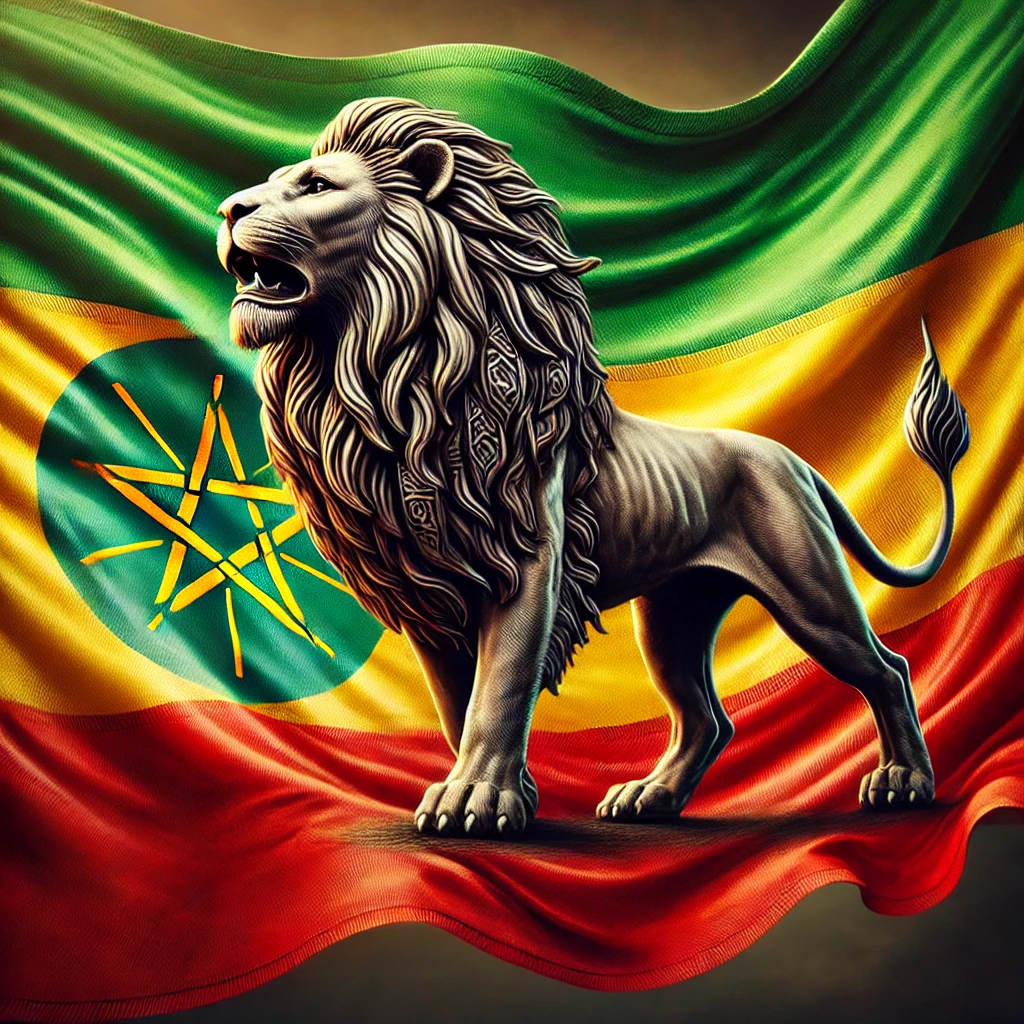Rastafarian culture is rich with symbols that carry deep spiritual and cultural meaning. Two of di most prominent symbols in Rastafarianism are di Lion of Judah and di Ethiopian Flag. These symbols reflect di movement’s connection to African heritage, spirituality, and resistance to oppression. Let’s explore di significance behind these iconic images and why they are so important to Rastafarians.
Di Lion of Judah
One of di most recognizable symbols in Rastafarianism is di Lion of Judah, which holds deep spiritual significance. It represents strength, power, and di divine authority of Haile Selassie I, who Rastas believe is Jah (God) incarnate.
Biblical Origins
Di symbol of di Lion of Judah comes from di Bible, where it is used to describe Jesus Christ in di Book of Revelation. For Rastafarians, this connection to Christ is crucial, as they see Haile Selassie I as di fulfillment of biblical prophecy. Selassie, born Ras Tafari Makonnen, was crowned Emperor of Ethiopia in 1930, and his title, “Conquering Lion of di Tribe of Judah,” reflects this biblical lineage.
Strength and Protection
For Rastas, di Lion of Judah represents more than just a spiritual symbol – it embodies courage, resistance, and di fight against oppression. Di lion is seen as a protector of di people, a force of divine justice standing strong against Babylon (the oppressive system of Western materialism and exploitation). Wearing or displaying di Lion of Judah is a way for Rastas to show their connection to Jah and di ongoing struggle for freedom and equality.
Di Lion of Judah can often be seen on Rastafarian flags, clothing, and jewelry, symbolizing strength, pride, and spiritual resilience.
Di Ethiopian Flag
Another key symbol in Rastafarian culture is di Ethiopian Flag. For Rastas, Ethiopia is more than just a country – it’s Zion, di Promised Land, and di spiritual homeland of African people. Di colors of di Ethiopian flag – red, gold, and green – are deeply symbolic and often appear in Rasta clothing, art, and banners.
Di Meaning of di Colors
- Red: Represents di blood of those who have fought and died for liberation and justice. It’s a reminder of di struggles faced by African people, both historically and in di modern era, as they resist oppression.
- Gold: Symbolizes wealth and prosperity, but not in a material sense. In Rastafarianism, gold represents di wealth of spirit, di divine light of Jah, and di richness of African heritage.
- Green: Reflects di lushness of di Earth and Ethiopia as di spiritual home. It represents life, growth, and di natural beauty that Rastafarians seek to protect through their lifestyle and spiritual practices.
Connection to Haile Selassie I
For Rastas, di Ethiopian Flag is more than just a national symbol – it’s a direct connection to Haile Selassie I, who is seen as di living God. When Rastafarians display di Ethiopian Flag, dey are honoring Selassie and expressing their desire for repatriation, both spiritually and physically, to Ethiopia.
How These Symbols Are Used Today
In modern Rastafarian culture, di Lion of Judah and Ethiopian Flag continue to be central to Rasta identity. From reggae concerts to community gatherings, these symbols are proudly displayed as a reminder of di Rasta values of strength, unity, and resistance against oppression.
You’ll often see di colors red, gold, and green on flags, clothing, jewelry, and even in Rastafarian homes, symbolizing pride in African roots and di ongoing spiritual journey towards liberation. Di Lion of Judah serves as a reminder of Jah’s guidance and protection, while di Ethiopian Flag reinforces di belief in Africa as di spiritual homeland.
Final Thoughts
Both di Lion of Judah and di Ethiopian Flag are more than just symbols in Rastafarianism – dey are living expressions of faith, culture, and resistance. Dey represent di enduring connection to Jah, African heritage, and di spiritual struggle for freedom against di forces of Babylon. Through these symbols, Rastas carry forward a message of strength, unity, and divine protection, reminding di world of their ongoing journey toward spiritual liberation.

